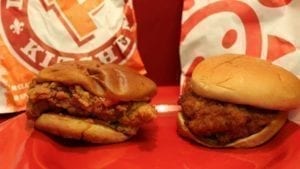
Image optimisation is crucial when converting a successful SEO strategy into quality site traffic. Images are part of a website’s on-page SEO and influence the site’s ability to drive quality, organic traffic from Search Engine Results Pages (SERPs). When it comes to images, SEO strategies are simple: keep them small, keep them relevant, and label them with your keywords. Check out our helpful guide for a high-resolution understanding of image optimisation for SEO.
Image Alt Text
Search engines cannot view images. Their bots rely on you to provide descriptions of your on-page images to contextualise them. Those descriptions are known as image alt text (sometimes an alt description). Alt text loads in place of an image if it fails to load, and screen-reader apps rely on it for visually impaired users. Search engine bots read this alt text to ensure the image is relevant to the corresponding content and index the image for image search queries.
Every image on your website should have relevant, descriptive alt text, and this is an opportunity to finesse your target keyword(s) into the page. Make sure your image alt text aligns with the keywords and descriptions in your metadata (logos and icons are common exceptions). Doing so helps search engine bots establish a correlation between the page’s images and content.
Top Tip: Search engines can also see the filename for images, so be sure to work your keywords into those as well.
Optimising Image Size
File Type
Page load speed is part of Google’s Core Web Vitals assessment, which is a ranking factor. Google and other search engines consider a slow load speed to reflect a poor user experience. Oversized images are a common drag on page load speeds.
JPEGs are the preferred format as they are generally smaller and quicker to load. PNGs are also widely supported, but while their quality is sharper than JPEGs, they are usually larger, which can impact load speed and UX. Google’s PageSpeed Insights also recommends Next-Gen image formats: JPEG 2000, JPEG XR, and WebP. These have higher compression and quality capabilities than legacy formats.
File Size
Deliver the smallest image file size possible without compromising image quality to maintain a rapid load speed. Ideally, no image on your page will be larger than 100Kb. Some images, such as banners or blog post feature images, may have dimensions too large to achieve this. Aim to compress even large image files down to 250Kb or less, and consider progressive JPEG displays that display in a low resolution quickly and then sharpen as the image loads.
Image Dimensions
Serve images scaled to the page. You can either resize the image to a size that will work across all devices or resize the image to match the size that it is displayed.
Responsive Images
Designing responsive web pages leads to a better user experience because users use them across a plethora of device types. This includes responsive images. Serving desktop-sized images to mobile devices can use 2-4x more data than needed. Instead of a “one-size-fits-all” approach to images, serve different image sizes to different devices.
Add Structured Data & Image Sitemaps
Adding structured data and an image sitemap ensures that the images on your site are found and correctly identified. Google supports rich snippets for images in Product, Video and Recipe schema, but you can also add them to other types for a better understanding of the page. Image sitemaps help Google find all your images, even those on a third party CDN.
Make sure your image alt text matches the keywords and descriptions in your metadata. Such continuity will create a cohesive story for the search bot to follow. Remember, the faster the bot can gather information, the more it can crawl on your site.
Extra Tips to Optimise Images
While the above are the main drivers in image optimisation for SEO, there are several other tricks you can try to up your image SEO game.
Optimise Your Thumbnails
Separate your thumbnails from your main pictures. Smaller thumbnails will improve load speeds. For image alt text on product thumbnails, include the word ‘product’ before the title.
Serve Images Over a CDN
Don’t rely on third-party hosting of an image. Instead, serve images over a Content Delivery Network (CDN). Image CDNs are excellent at optimising images. Switching to an image CDN can yield a 40–80% savings in image file size and will probably help you save bytes on your images and therefore load your pages faster.
If possible, embed the image on the website yourself. Services like Flickr, Imgur, and PostImage can help you save space on your servers, but unlike a CDN, a copy of those images is not also stored on your server. If anything happens to an image on a third-party server, you’ll have no available backup.

























